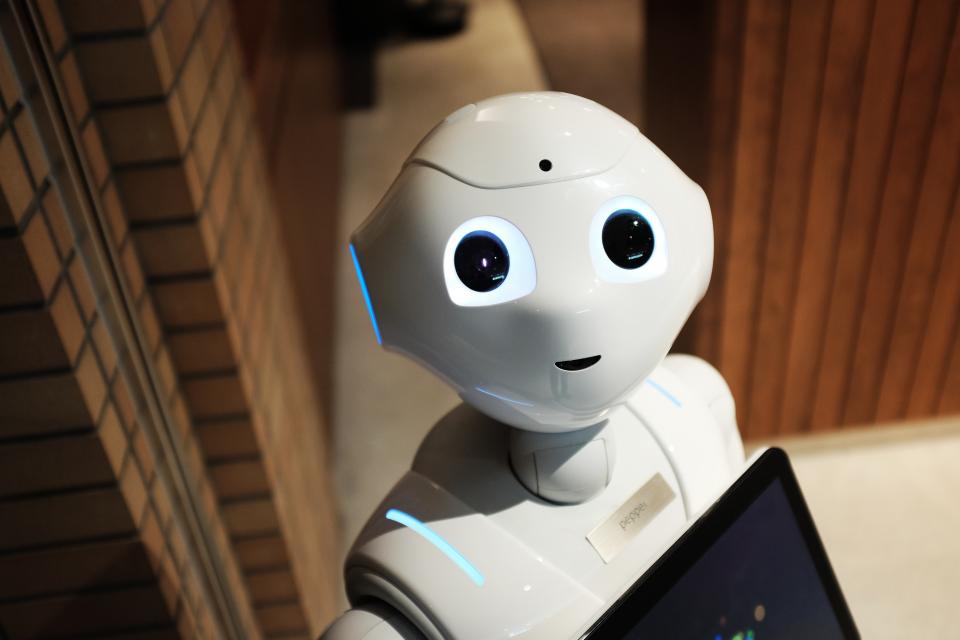Blog
Alexander Kulitski
Today our world is more connected than it has ever been. And by that I mean that not only people have the ability to keep in touch 24/7 using social media, texting each other or liking funny Tweets, but machines are now also able to communicate. No, there is no Tinder for refrigerators or Facebook for washing machines, but it is still really exciting.
Machine-to-machine communication (shortly M2M) is a broad term that is used to describe a technology that enables network devices to exchange information with each other and act without the actual presence of humans. But don’t worry, they’re not going to take over the world, and we’re getting another subpar sequel of Transformers, but now as a documentary.
The question is: how does it work? How are they able to communicate with each other after all?
It may seem really hard to swallow, but in reality the idea is quite simple. On the whole, M2M networks are very similar to LAN or WAN networks, but are particularly used to allow machines, sensors, and controls, to communicate. All inter-connected devices distribute the information they collect on their own back to other devices in their network. This allows a human (or other intelligent control unit) to estimate what is going on across the whole network and figure out a strategy of further actions.
The communication between the machines includes serial connection, power line connection (PLC), or wireless communications in the industrial Internet of Things (IoT).
Generally, M2M is used for setting up a connection among all aspects of the physical entities around us. Using this tool, business processes can be improved, business assets can be monitored in a more efficient way and new benefits can be generated quite easily.
The main components of an M2M system include a RFID sensor, Wi-Fi or cellular communications link and special software programmed to help network devices to decipher data and come to particular conclusions. The most popular type of M2M communication that we know is telemetry. It has already been used since the beginning of the previous century to transfer operational data. At first, telephone lines, and later, radio waves, were used—— to transfer the measurements gathered from monitoring instruments in remote locations. The Internet and improved standards for wireless technology have expanded the role of telemetry from pure science, engineering and manufacturing to everyday use in products like home heating units, electric meters and Internet-connected appliances. Products built with M2M communication capabilities are often called “smart.”
So why do we need M2M? And where can we use it?
First of all, in manufacturing, because every manufacturing environment, for food processing or manufacturing in general, relies on technology to ensure that costs are managed properly and processes are executed efficiently.
For example, M2M tools allow business owners to be alerted on their smartphones when an important piece of equipment needs servicing, so they can address issues as quickly as they arise. Sophisticated networks of sensors connected to the Internet could even order replacement parts automatically.
Smart homes are also the new normal these days. M2M is expected to take home-based IoT to the next level. Manufacturers like LG and Samsung are already developing smart home appliances to help provide users with a higher quality of life. For instance, a washing machine with inbuilt M2M-capability sends an alert to the owners’ portable device that it has finished washing or drying, or a smart refrigerator can order groceries from a shop. There are more examples of home automation that can potentially improve the quality of life for people, including systems that allow the residents of a house to control M2M systems using their mobile devices.
We should not forget about the healthcare industry. One of the biggest opportunities for M2M technology lies in the sphere of healthcare. With M2M technology, hospitals can automate processes to provide the highest levels of treatment. Using M2M devices that can react faster than a brain of a human makes this possible. Imagine a patient’s vital signs dropped below normal and an M2M-connected life support device could automatically deliver oxygen to their body until a doctor arrived for help. M2M also allows patients to be monitored in their own homes without a single hospital visit. These devices can track a person’s normal movements, detect when they have a fall and alert a healthcare worker about the accident.
In the new age of energy efficiency, automation will also quickly become normal. As energy companies look for new ways to automate the metering process, M2M comes in handy, helping them automatically gather energy consumption data, so they can accurately bill customers. Smart meters can track how much energy a household or business uses and automatically alert the energy company, which replaces sending out an employee to read the meter or requiring the customer to provide the data.
Properly used Machine-to-Machine communication can help us reimagine large parts of the world for better security and environmental responsibility. It opens up a world of new possibilities. Perhaps one day our homes and devices will care for us as much as we care for them and help us make our everyday life much easier and safer. The future doesn’t seem so bad.
